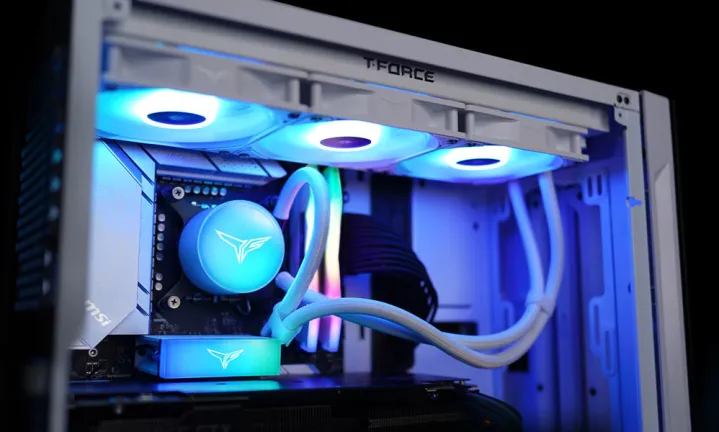
There are a wide range of cooling solutions for the average PC, from the mundane to the extremely exotic, but for most PC buyers, builders, and enthusiasts, the two main options to pick from are air cooling and water cooling. Although it’s fair to say that air cooling is more straightforward and water requires a few additional considerations, it still might be worth going the extra mile to chill your components with liquid.
Let’s take a look at how air cooling and liquid cooling compare, to see which is best for your next PC upgrade.
Advantages of air cooling
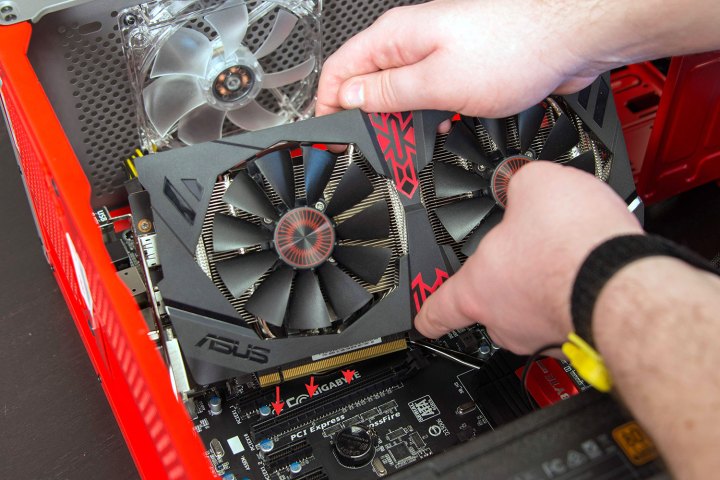
We’ve said it already, but if you want the simplest cooling solution for your PC, whether it’s the CPU, graphics card, memory, motherboard, or anything else in your PC, then air cooling is absolutely the way to go — especially if you’re buying a prebuilt PC. Air cooling just works and is much more durable, with only a single real point of failure in the fan, so maintenance is almost completely unnecessary beyond cleaning. such coolers are unlikely to fail for years, or even decades.
Despite how easy it is to work with, air cooling can have extremely high performance, too. You don’t even need one of the biggest CPU coolers to get it. High-end air coolers like the Noctua NH-D15 are big, but not gigantic, and they offer credible competition to some of the most powerful all-in-one (AIO) watercooling solutions.
They won’t be able to compete with a properly configured custom watercooling loop, nor some of the exotic sub-ambient solutions, but for day-to-day capable cooling that runs at a comfortable temperature and noise level, the top air coolers are a great option.
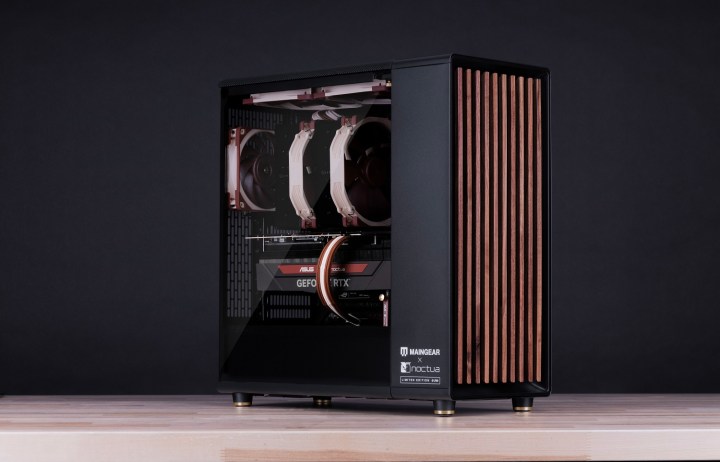
But that’s overkill for most PCs, though. Even if you’re running a flagship gaming processor like the 7800X3D, you can run a $30 single tower cooler and get almost identical performance to that of a top air or AIO watercooler. To that end, air coolers are also typically cheaper than their AIO counterparts, though there are budget AIOs that come in cheaper than the top air models. You do get a free air cooler with most budget processors, too, and that is more than enough to keep it running well — though not always with the lowest of noise levels.
Air coolers can be excellent for noise levels as well, though. While they can’t offer the same surface area for cooling as the largest AIOs and therefore do tend to need to have faster-spinning fans to compensate, that’s not the case if you’re willing to use less power-hungry CPUs, or lower their performance or voltage slightly.
If you’re happy to miss out on the very top end performance, you can always run your CPUs in lower power modes or run a passive cooler for completely silent air cooling with zero points of failure whatsoever.
Advantages of watercooling

The main two advantages of liquid cooling are potential performance and noise levels. This mostly stems from the radiators being placed around the edge of the case, thereby giving them more room to offer a larger surface area for greater heat dissipation. That in turn allows the fans to spin slower or not at all to attain the same level of cooling performance, or to spin up faster to provide greater thermal dissipation.
That’s a strict generalization, though, as from cooler to cooler, there often isn’t a lot of difference between air and water when it comes to cooling ability. A high-end 240mm AIO will perform about as well as high-end dual-tower air cooler, and the price often won’t be that different either. That changes with the larger 360mm and 480mm AIOs, where there’s just more metal than any air cooler can come compete with. The volume of water also means that it takes longer for a watercooler to be saturated with heat, which helps even out spikes in CPU or GPU load.
Don’t just assume water is just better, though, because it often isn’t, and air cooling has a number of its own advantages worth considering.
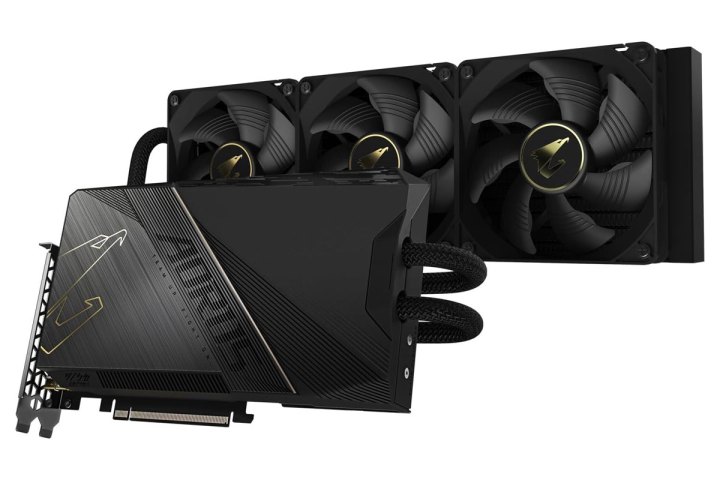
Watercooling can be easier to work with once installed. With the standard water block being low-profile and the radiators keeping all the metal work around the edges of the case interior, that can make accessing memory, PCIexpress slots, or even just your CMOS battery that much easier.
Installing the watercooler can be more fiddly, since you’ll be dealing with preattached tubing that you don’t want to stress too much. You also need to factor in mounting the radiator in the right spot, which can lead to clearance issues depending on your case and component layout.
What about custom watercooling?
If you’re considering custom watercooling, then take all the advantages and disadvantages of an AIO watercooling loop and multiply them a couple of times over. Custom watercooling loops have a near unlimited performance potential — although the minimum CPU temperature is constrained by ambient air temperature — and can be almost completely silent if configured correctly.
They also can look amazing, with hardline tubing, chrome fittings, distribution plates, fancy RGB lighting, different liquids with effects, and practically infinite color options. The world is your oyster if you’re willing to pay for it.
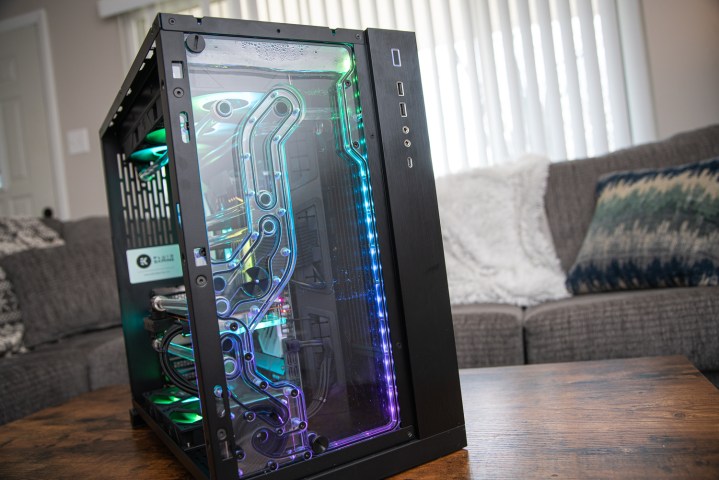
But the downsides are compounded too. Setup and installation is a lot of effort and there’s the potential for leaks in your system, noisy and annoying air bubbles you have to bleed, the evaporation and buildup in the loop that requires flushing and replacing the fluid every six months to a year. Upfront costs are high and resale value is almost nonexistent.
Custom loops let you cool other parts of your PC, though. Want to water cool your memory? There’s a kit for that. Want to cool the motherboard? Buy a monoblock that cools the VRMs and your CPU in one go. You can even watercool your SSD if you want to. You don’t really need to do any of it, but the option is there if you want it.
Air vs. water: Which is best?
It’s mostly a question of personal preference, as there’s a water cooling or air cooling solution for you no matter your budget or needs. Air cooling is just as good as entry-level to midrange AIOs in terms of noise levels and performance, and it’s much more durable and reliable over the long term. Watercooling has the potential to offer greater performance and be easier to work with once installed, but you do have to factor in replacing the cooler more regularly and keep an eye out for leaks and pump failures.
Custom watercooling is the most expensive, demanding, and complicated solution, but it does offer better performance and noise levels, along with custom aesthetics which will let you truly personalize your PC.
Ultimately, air cooling is best for the average PC user — it’s just that much more straightforward to work with. If you’re building a small PC, or want a specific look, AIO watercooling gives you greater options, while custom watercooling should remain the domain of serious enthusiasts with time and money to burn.
Editors' Recommendations
- The best budget CPU coolers you can buy for under $50
- PS5 vs. PC: Which is the better buy for gaming in 2024?
- The 6 best places to buy a prebuilt gaming PC in 2024
- These are the best AIO liquid coolers for your PC in 2023
- DirectX 12 vs. DirectX 11: which is best for PC gaming?




